The word mast is of Anglo-Saxon origin, and originally described an abundance of acorns on the forest floor, eagerly devoured by domestic swine. The Old German root meant “to be fat,” and Fagus, the Latin genus name for the beeches, is from the Greek phagein, meaning “to eat.” For animals facing food shortages and the energy-sapping hardships of a long winter’s deep snow and cold, to be fat is crucial.
Today, when we refer to mast we mean seeds – the ripened ovules of trees, shrubs, and woody vines. Technically, mast includes all fruit, the structures that enclose and operate to disperse the seeds therein, including nuts, nutlets, berries, drupes, pomes, pods, and samaras.
Anyone who spends time in the woods has witnessed the bumper mast years, when trees across whole regions produce prodigious quantities of seeds. Ecologists in California discovered that in a good year, a single blue oak tree may produce ten times its annual average of acorns – over 100,000 nuts. The same tree will produce few or possibly no nuts at all during a bust year. Measured across hundreds, or even thousands, of square miles, interspecific synchronized masting involving millions of trees, all producing an excess of seeds – or not – has profound effects on all that live there, affecting population dynamics, fitness, ecosystem functions, and evolution.
Plant ecologists, zoologists, and naturalists have pondered exactly what factor (or combination of factors) causes this. A leading theory is that climate conditions stimulate trees to mast in synchrony across vast expanses of habitat. El Niño and its influences upon ocean currents, wind, temperatures, and precipitation may trigger masting cycles on geographic scales.
But why do individual trees invest such huge resources into casting multitudinous seeds to the wind? Ecologists have acknowledged that some sort of economy of scale is at work; presumably, periodic huge vegetative investments diverted to reproductive output instead of growth are more efficient than smaller annual efforts. “Predation satiation” is regarded as another cause. Seed-eaters are periodically swamped by a masting season’s over-abundance of seeds, many of which escape consumption and grow new plants instead. Conversely, years of low or nonexistent seed production keep seed-eaters in check and cause declines in their numbers. This is a fascinating concept because it is during these bust years that animal dispersal and colonization of new habitats takes place. Thirty-eight years of season-to-season wildlife studies in northern Vermont’s Green Mountain foothills has enabled me to appreciate that the sudden arrival of gray squirrels and wild turkeys in my study area during the early 1980s corresponded with disastrously low acorn and beechnut mast crops in the Champlain Basin lowlands. Walter Koenig and Johannes Knops describe these masting impacts upon animal populations as “ecosystem-wide domino effects” – effects that reverberate through countless organisms at various levels in the food chain.
While the oaks, hickories, and beech trees get most of the press, the reproductive capacity and variability of other mast-producing plants – in particular, the shrubs and woody vines – is no less important. Across whole landscapes these diverse species contribute tons upon tons of fruits and seeds to the forest’s cornucopia – often when the masters have quit for the year. Here are some of the more unheralded stars of the show.
In reverting pastures throughout the Northeast and Canada, the wide-spreading, flat-topped hawthorn trees stand in sweltering heat waves with all the grace and grandeur of acacias on the east African plain. Smooth, sharp-pointed thorns bristling from zig-zagging branches keep humans away, though wildlife dive in for the “pommettes,” which do indeed look like little apples. I have seen sign of black bears, porcupines, and raccoons feeding within a hawthorn’s thorny fortress, and I have no doubt that fishers, gray foxes, and opossums partake, as well. Numerous species of birds enjoy these marvelous little fruits.
Back in the sixties, many a mountain dirt road in Vermont was still rural, with only occasional deer camps and tumbled-down remains of long abandoned farmhouses and barns. I loved walking along a certain network of such roads in the Worcester Mountains. One autumn day, I was photographing a handsome hawthorn, resplendent with yellow and red miniature apple-like fruits. An older gentleman (no doubt of the vintage who could remember actually farming these now forested hills), stopped his battered old truck beside me. “What cha lookin’ at?” was all he said. I enthusiastically babbled on, sharing all the virtues of this fine tree and its bounteous fruit. “Damnable tire puncture trees!” was all he replied before he drove away.
Resembling an odd cross between speckled alder and yellow birch saplings, the multi-stemmed thickets of beaked hazelnut proliferate along roadside and field edge habitats. The pale green, fuzzy looking, beaked hazelnut fruits are unique. Paired fruits are encased in bristly bracts that completely enclose each oval nut on one end, with the opposite end culminating in a long beak-like structure. Peel the bracts away and you will find a filbert-like nut inside, which is delicious, sweet, and much like the commercial filberts we enjoy in fancy nut mixes. But who actually gets to harvest many of these wonderful nuts in the wild? Certainly not us. Chipmunks, squirrels, fishers, raccoons, bears, jays, crows, hairy woodpeckers, grouse, and turkeys get there first.
The crimson-colored twigs and shoots of red osier dogwood are spectacular, both in autumn and again in spring. Fruit clusters are white, off-white, or grayish-blue. Dozens of bird species and small mammals enjoy the fruit as well as this plant’s exceptional concealment cover and nesting opportunities. I have found evidence of this species’ drupes in bear and fox fecal matter and have watched wild turkeys and crows eating the fruit, as well.
Punctuating old field pastures with their youthful spires, or their mature irregular crowns, the “invading” red cedars are not cedars at all; they are our only tree form juniper. Throughout temperate North America, eastern red cedars and their related cousins are spread by the birds and mammals that eat their “berries,” which are actually cones. Nearly 30 species of birds in our region consume them, as do numerous mammals, including red and gray squirrels, red and gray foxes, chipmunks, coyotes, fishers, and black bears. I once conducted an experiment and proved that scat-scarified juniper seeds resulted in higher germination rates. I suspect this is because mastication and digestion does a great job of removing the waxy, resinous fruit covering and prepares the seed to germinate.
Of the many colorful fruits out there, the winter appearance of highbush-cranberry and winterberry excite me the most. In his marvelous book Winter World, Bernd Heinrich observed that the fruits of these shrubs are not of interest in the fall and hang untouched for months – then to be suddenly eaten to the last berry by some passing flock of birds. Robins, waxwings, crows, and chickadees will feed on them, especially for the late winter fuel these fruits provide. I’ve found flat, disk-shaped seeds of Viburnum trilobum in spring bear scats and once deciphered a curious arrangement of canine rear-end and jumping-feet impressions in the snow. A coyote had repeatedly sat and studied her prize before springing upwards to get to the clusters of frosty cranberrybush fruits that were tantalizing and just out of reach.
Nestled among dark green wetland thickets, the mountain holly shrubs catch the eye. Clusters of pendulous berry-like drupes look like satin ornaments and hang from equally lovely purple-red pedicels. The beauty is fleeting, though, because the fruits are totally gone within a week or two. I have seen five different avian species eagerly working them over at different times: black-capped chickadee, robin, brown thrasher, hermit thrush, and red-eyed vireo. Bear, fox, and coyote feces reveal undigested nutlets from the drupes.
The sumac’s compact clusters of red berries are a boon to wildlife, especially in late winter. Eighteen species of birds are known to consume the seeds within the clusters, both winter residents and returning spring migrants alike. But no account I have ever read lists the species that I once saw incongruously perching upon staghorn sumac limbs while pecking and probing with its long bill to get at the fruits. An April blizzard had buried Maine’s Cliff Island in two-and-a-half feet of heavy wet snow, and the American woodcock that had arrived there a week earlier suddenly found themselves with no access to the soil for foraging. The sumacs’ berry spikes were the only game in town and kept them busy and apparently satisfied.
The flowers and early fruit sets of red elderberry are attractive harbingers of what is to come. For dozens of birds and mammals, this shrub is a sure winner. For country folks, like my grandfather, the purple fruits of black elder were reverently used to make elderberry wine during Prohibition and the Depression. Some 30 years later, when I was in my teens, I remember him bringing to the dinner table his last dusty bottle from the batch he proclaimed had been his best. Though it was musty, with a vinegary finish, the elderberries’ flavor was still there, bequeathing to our family’s celebration a deep and unspoken empathy for hard times, frugality, and for the enduring wonder and joy that this plant provides.
Both of these small, unassuming understory trees are members of the birch family and have attractive hop-like arrangements of their fruit, but the similarity ends there. Hophornbeam’s fruit is a tiny, flattish nut that is enclosed within a bladder-like sac. More than a dozen seed sacs are arranged in overlapping clusters that resemble hops. American hornbeam’s small ribbed nut is attached to the base of a cluster of three-lobed bracts that hang down and partially cover each seed. The hop-like fruits of both species’ bracts gradually weaken in the winter winds and weather, mercifully releasing their seeds to be savored on the snow pack by numerous small mammals and birds. Over 40 species of birds consume the seeds, including common mergansers, wood ducks, and mallards.
Supposedly named for the wet goat odor of its fruit and flowers, nannyberry is the largest of our viburnums. Robust plants may even appear tree-like; sturdy trunks may rise to 30 feet or more. Its berry-like fruits mature to be bluish-black, elliptical drupes that resemble raisins, especially when dried and shriveled. Over a dozen species of birds enjoy this fruit in late summer and throughout the winter. I once admired a pair of eastern bluebirds feeding on the drupes, and cedar waxwings will regularly flock in for the harvest. This species, along with hobblebush and other viburnums, feed mammals, as well, including mice, chipmunks, squirrels, snowshoe hares, foxes, coyotes, and black bears.
Much attention is paid to the wildlife food values of nutmeats, especially beechnuts and acorns. However, I am convinced that the summer-to-fall fruit harvests provided by wild cherries comprise an overlooked mainstay in the diets of numerous birds and mammals. Given the sheer abundance of cherry seeds one finds in all sorts of animal droppings, the nutritional contributions of cherries must be great indeed. In our managed forests, as well as field-edge farm habitats, all sun-loving cherry species should be released, and competing crowns of other trees thinned, so that these mast producers may prosper and produce even more fruit.
Grazing cows judiciously wend their way among ever-proliferating “fairy circles,” the name old English farmers have given this juniper, due to its habit of growing in circular prickly clumps. Though it would seem likely that only the charmed could penetrate to the center of these sharp-needled fairy circles, a fair number of our wildlife neighbors find them quite passable. Small mammals benefit from the common juniper’s impenetrable cover, and many birds and mammals, including cedar waxwings, jays, robins, red squirrels, raccoons, foxes, coyotes, and black bears enjoy the powdery blue to blackish-blue fruits. They either eat them whole, or meticulously remove the pulp and eat the seeds, as does the familiar chickadee.



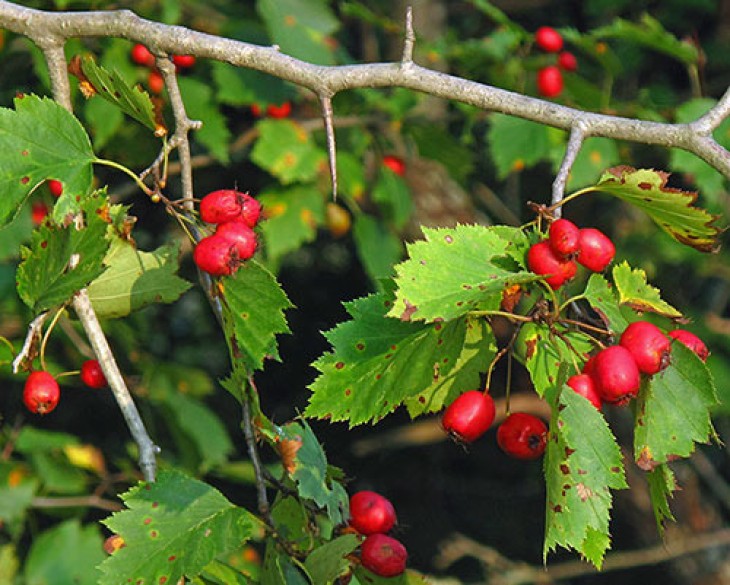
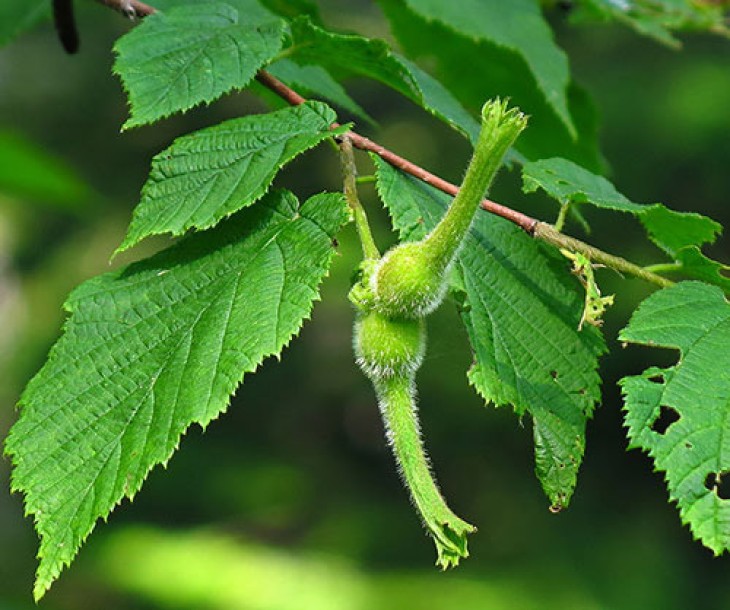
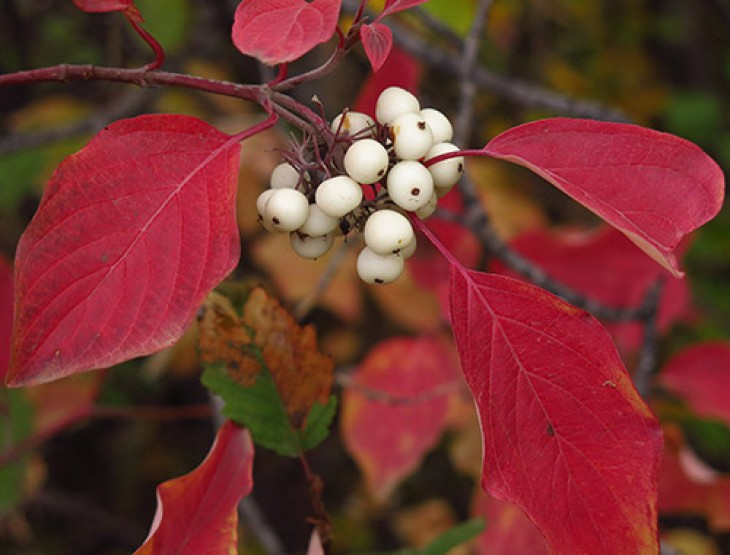
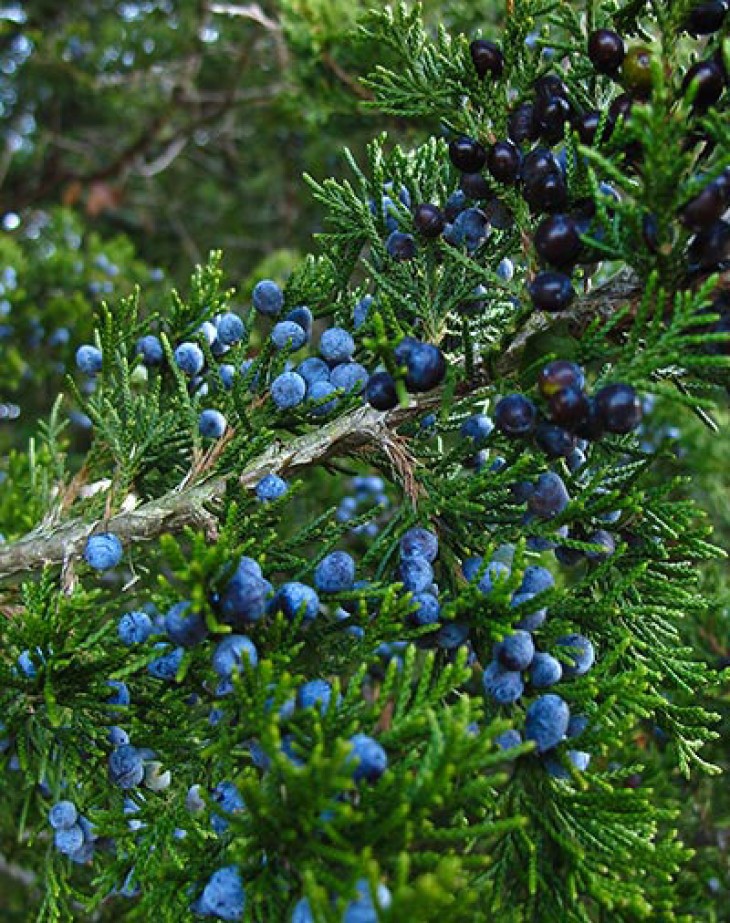
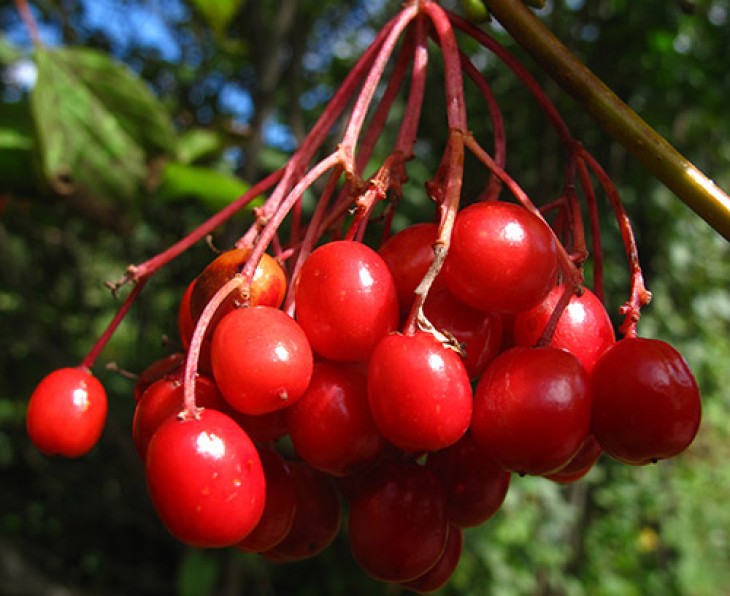
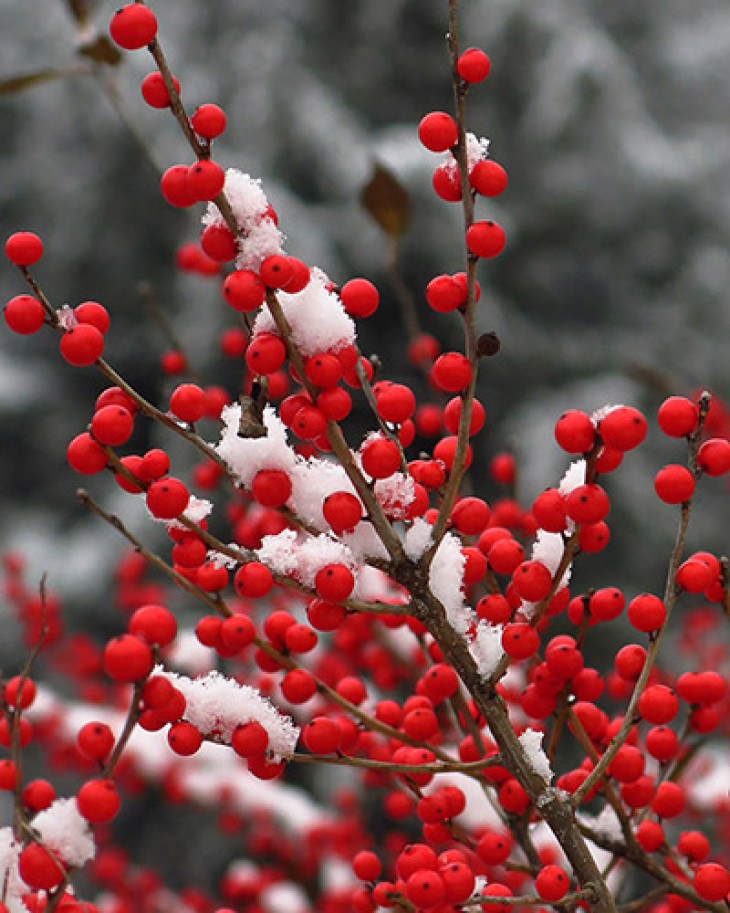

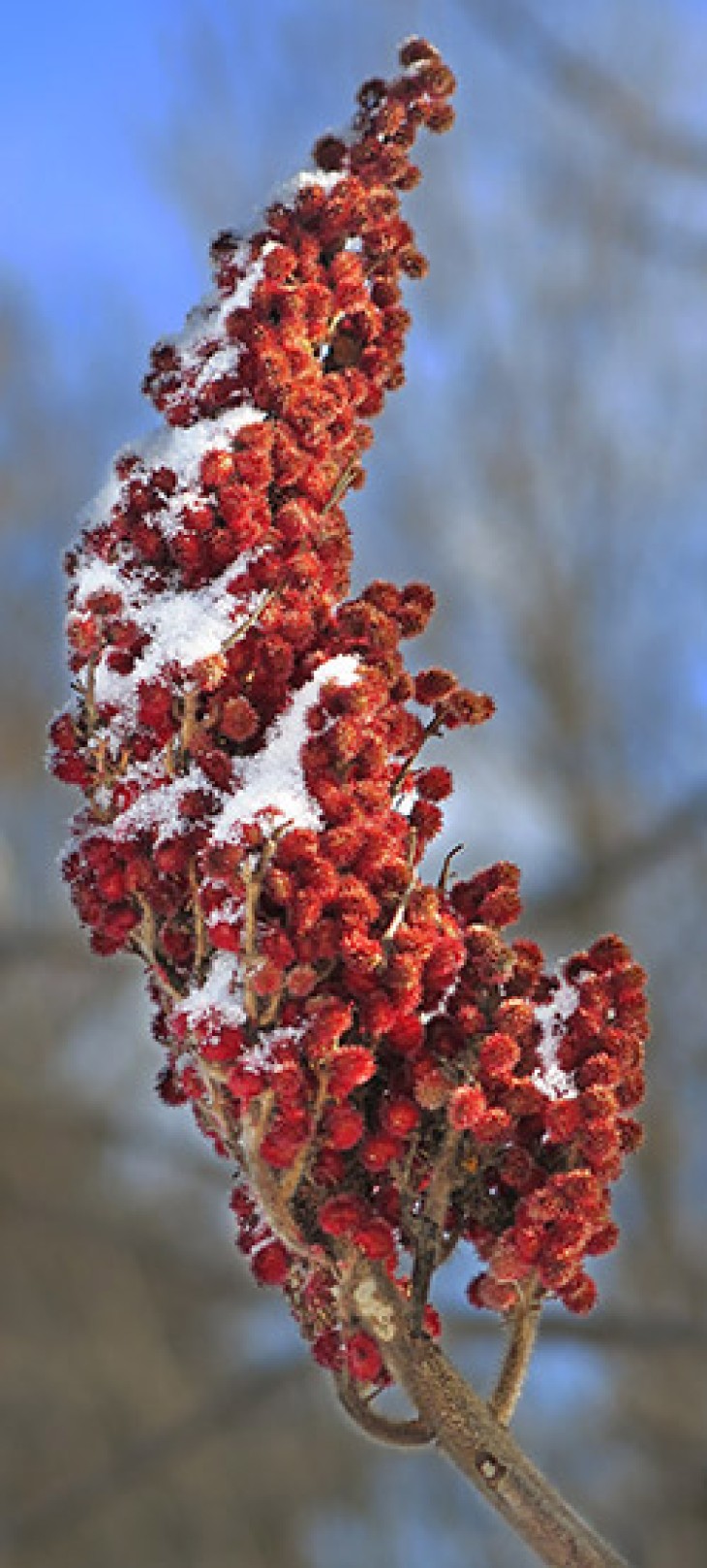
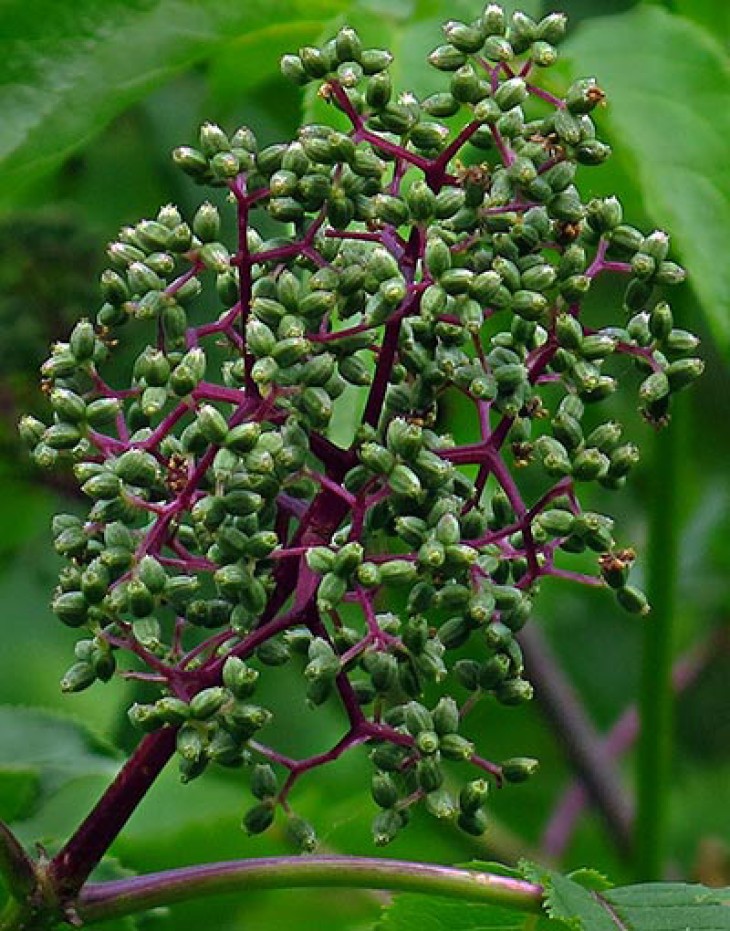
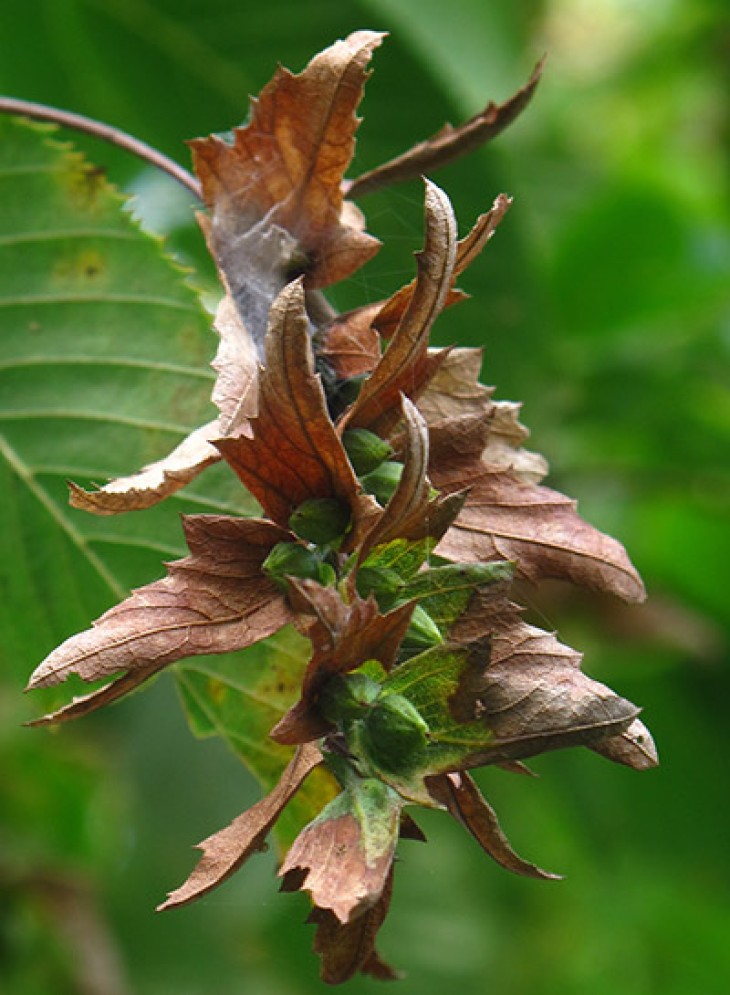
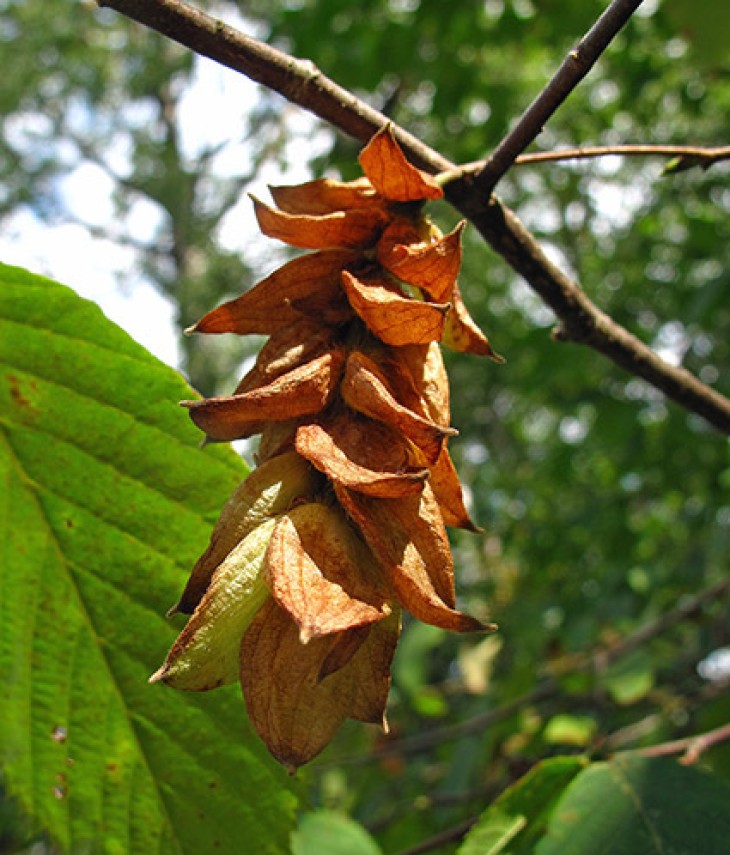
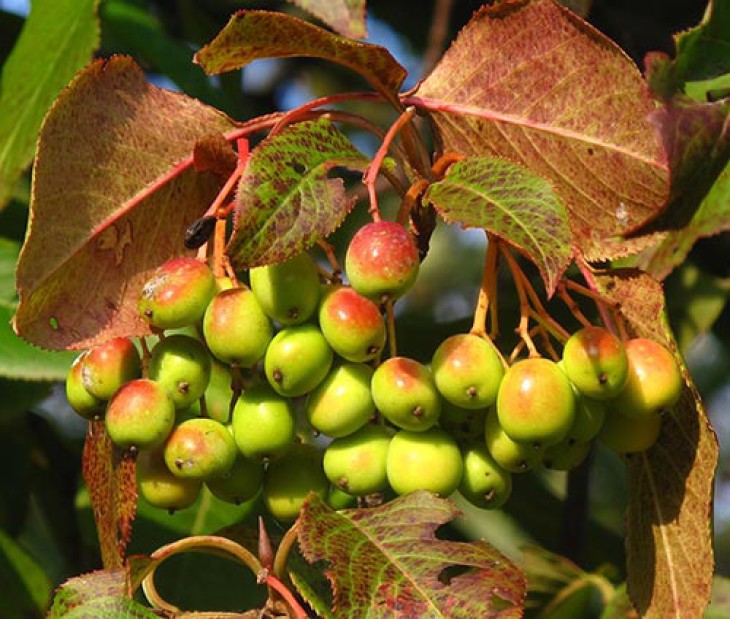
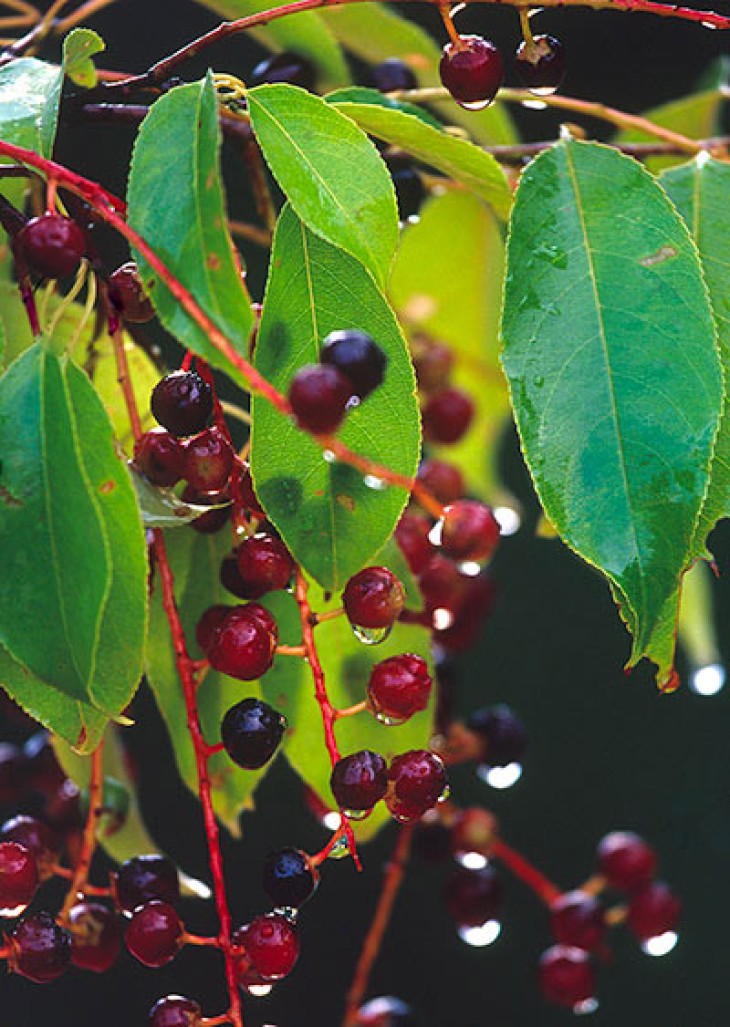
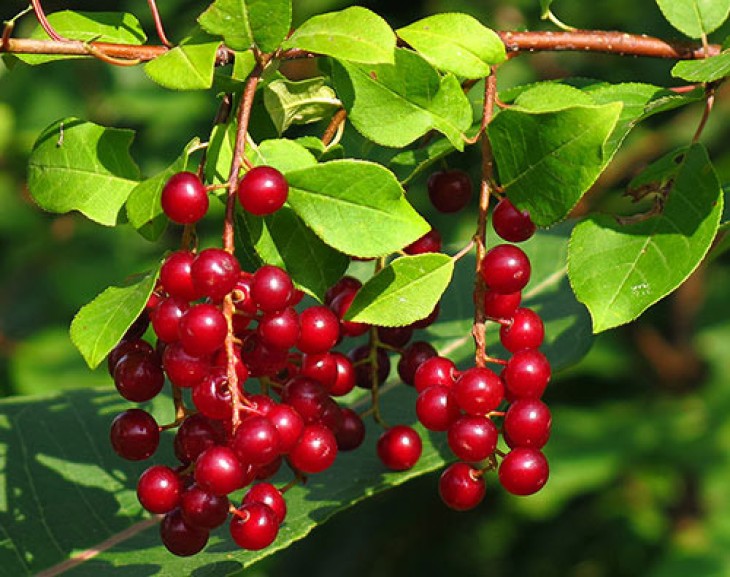
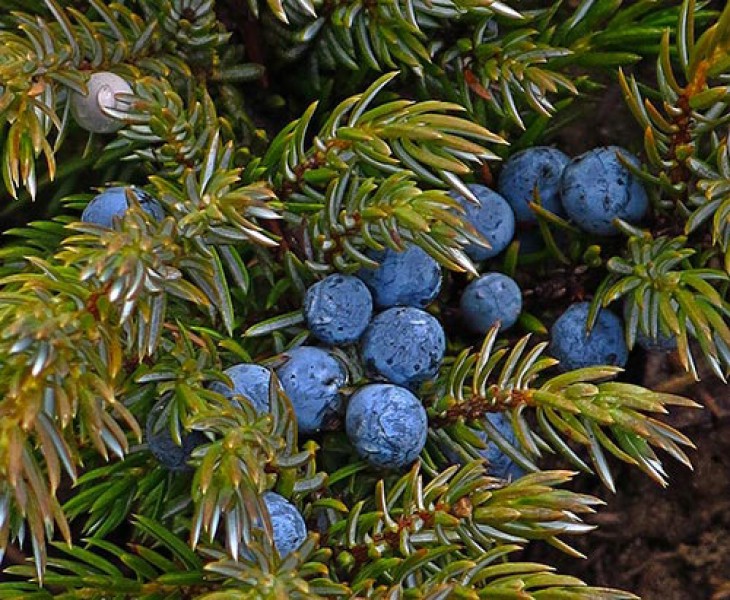
Discussion *